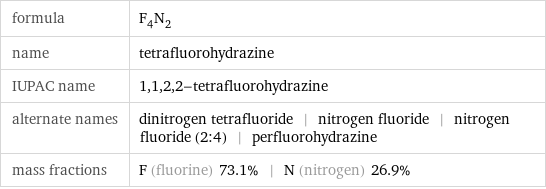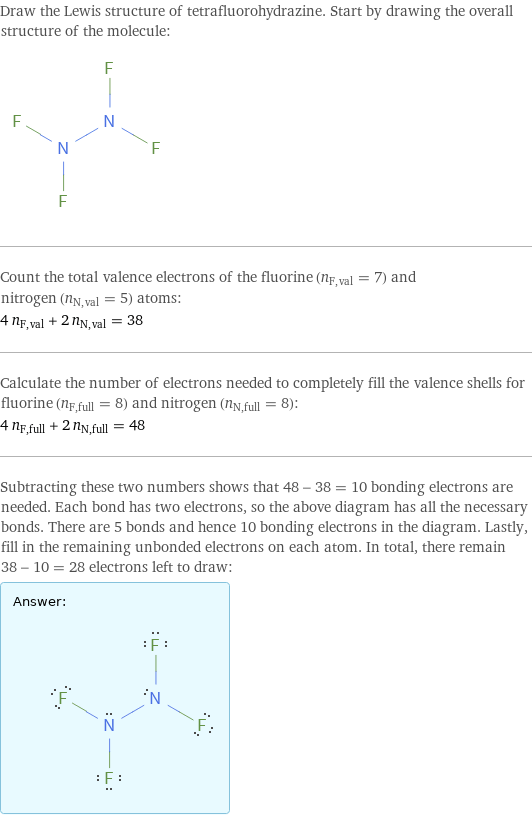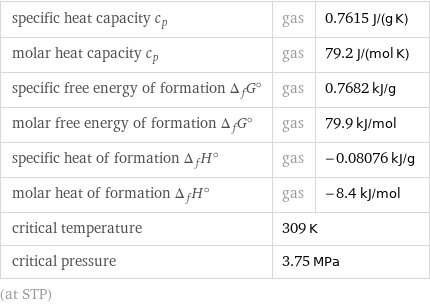Input interpretation

tetrafluorohydrazine
Chemical names and formulas

formula | F_4N_2 name | tetrafluorohydrazine IUPAC name | 1, 1, 2, 2-tetrafluorohydrazine alternate names | dinitrogen tetrafluoride | nitrogen fluoride | nitrogen fluoride (2:4) | perfluorohydrazine mass fractions | F (fluorine) 73.1% | N (nitrogen) 26.9%
Lewis structure

Draw the Lewis structure of tetrafluorohydrazine. Start by drawing the overall structure of the molecule: Count the total valence electrons of the fluorine (n_F, val = 7) and nitrogen (n_N, val = 5) atoms: 4 n_F, val + 2 n_N, val = 38 Calculate the number of electrons needed to completely fill the valence shells for fluorine (n_F, full = 8) and nitrogen (n_N, full = 8): 4 n_F, full + 2 n_N, full = 48 Subtracting these two numbers shows that 48 - 38 = 10 bonding electrons are needed. Each bond has two electrons, so the above diagram has all the necessary bonds. There are 5 bonds and hence 10 bonding electrons in the diagram. Lastly, fill in the remaining unbonded electrons on each atom. In total, there remain 38 - 10 = 28 electrons left to draw: Answer: | |
3D structure

3D structure
Basic properties

molar mass | 104.008 g/mol phase | gas (at STP) melting point | -164.5 °C boiling point | -74 °C density | 0.004251 g/cm^3 (at 20 °C) solubility in water | slightly soluble
Units

Gas properties (at STP)

density | 0.004251 g/cm^3 (at 20 °C) molar volume | 24470 cm^3/mol
Units

Thermodynamic properties

specific heat capacity c_p | gas | 0.7615 J/(g K) molar heat capacity c_p | gas | 79.2 J/(mol K) specific free energy of formation Δ_fG° | gas | 0.7682 kJ/g molar free energy of formation Δ_fG° | gas | 79.9 kJ/mol specific heat of formation Δ_fH° | gas | -0.08076 kJ/g molar heat of formation Δ_fH° | gas | -8.4 kJ/mol critical temperature | 309 K | critical pressure | 3.75 MPa | (at STP)
Chemical identifiers

CAS number | 10036-47-2 PubChem CID number | 24845 SMILES identifier | N(N(F)F)(F)F InChI identifier | InChI=1/F4N2/c1-5(2)6(3)4 EU number | 233-114-6 Gmelin number | 2062 RTECS number | QX0175000
Toxicity properties

RTECS classes | other